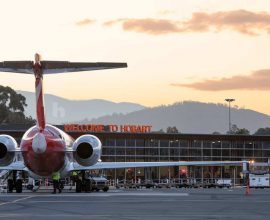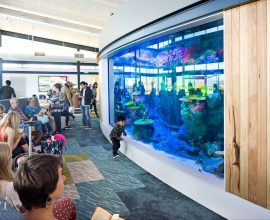Driver demand and the autonomous future of airport parking
Airports will need to start planning now for a future where autonomous vehicles will fundamentally change the landscape of airport car parking.
That’s the message from an L.E.K. report on the future of car parking, which predicts connected and autonomous vehicles (CAVs) will see a decline in car parking demand post 2040.
In the meantime, the report finds airports are already responding to changing behaviour by airport visitors that now have more choice when it comes to getting to and from the airport.
L.E.K. Partner Mark Streeting says the advent of ridesharing services has seen an increase in demand for drop off and pick up.
“What our research and modelling continues to tell us is that in the short to medium term, people will continue to want to either drive themselves or be driven to the airport,” he says.
“Within that we are seeing a significant shift away from people driving themselves to using ridesharing services.”
Streeting says while ridesharing services have not achieved the same level of market share in Australia, as in overseas markets like the US, there was increasing competition between ground transport providers.
He said as future demand for car parking evolved, airports would need to consider how to identify the best access and storage solutions for their visitors.
“We’re probably doing a better job at the moment with storage – or parking – than we are with access,” he says.
Streeting believes managing kerbside access will become increasingly important for airports as they meet growing demand.
Ensuring wayfinding is clear around different parking and pick up / drop off options (particularly for visitors unfamiliar with the airport) is a quick win in some cases to smooth traffic flows through airport precincts.
In the medium term, Streeting says electric vehicles will create both opportunities and challenges for airports – for example, requiring more charging stations.
But the longer term horizon of the arrival of CAVs could represent a more significant shift.
“There have been suggestions that when you get to full autonomy, the demand for parking could fall by as much as 90 per cent – although that’s well past 2040,” Streeting says.
“While we probably expect to move to a shared model in an autonomous future – the notion of ownership is probably going to diminish.”
Airports would need to consider how to manage congestion, with AV bringing the potential for increased trips to the airport.
For example, someone completing a return trip in a single day between Melbourne and Sydney might have the car drop them off at the airport, return home to transport other family members during the day, and then come back to the airport to pick them up.
“All of the sudden you’ve gone from two movements to four, which becomes a major issue with congestion on airport precinct roads,” he says.
“You’re also moving the price point for transport down by potentially 30-40 per cent, which has mode share impacts.”
But there are opportunities too, with airports being a potential hub for storing, cleaning and servicing CAVs when not in use.
“From a planning perspective, that work has to start right now and it’s got to focus on both the access and storage dimensions of ground transport,” Streeting says.
“The first thing you’ve got to do is develop realistic scenarios for how the ground transport market looks in 10, 20, 40 years.
“You’ve got to understand how access and storage demands are realistically going to change over time –
L.E.K. Consulting has released a new Executive Insight, “Where to Now? – The Future of Airport Car Parking”. This piece follows L.E.K.’s Special Report, “The Future of Airport Ground Access: How Airports Can Respond to Disruption”. You can read the insight here and the special report here.





